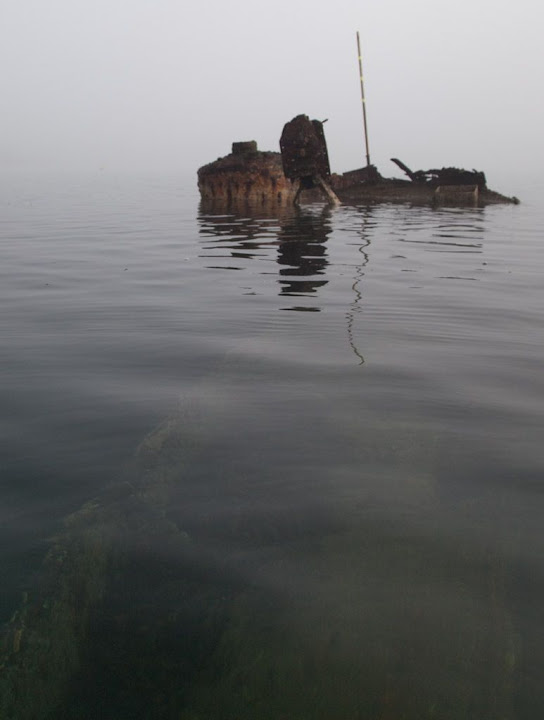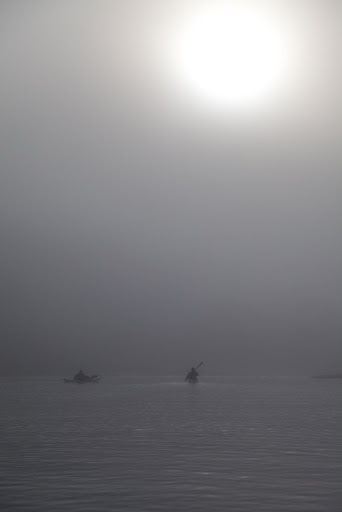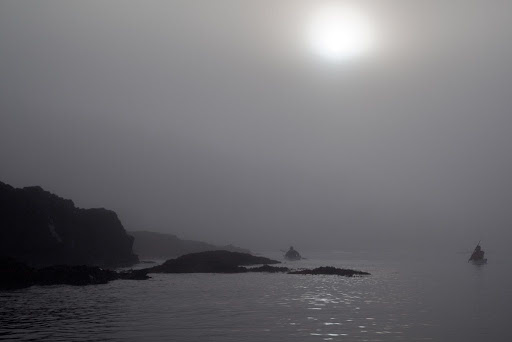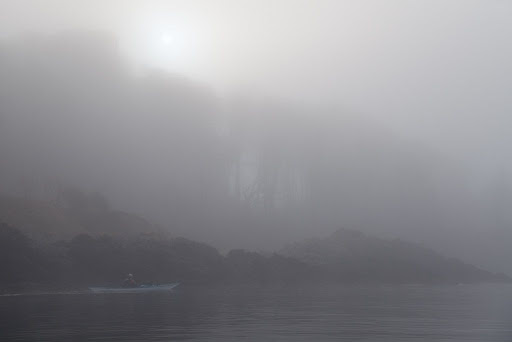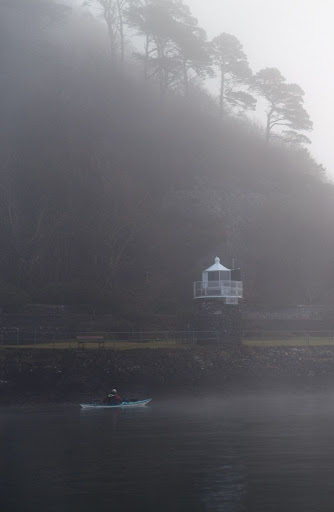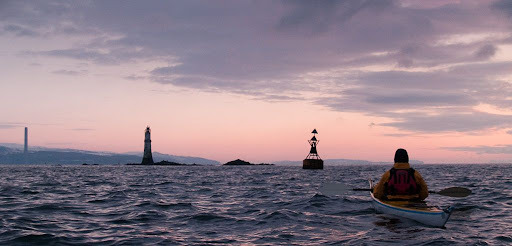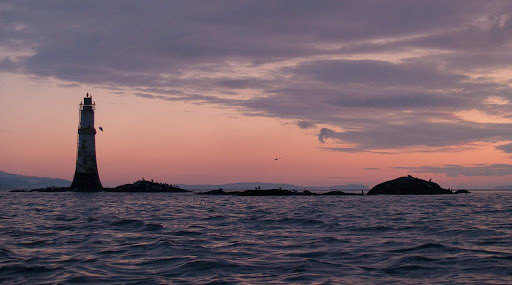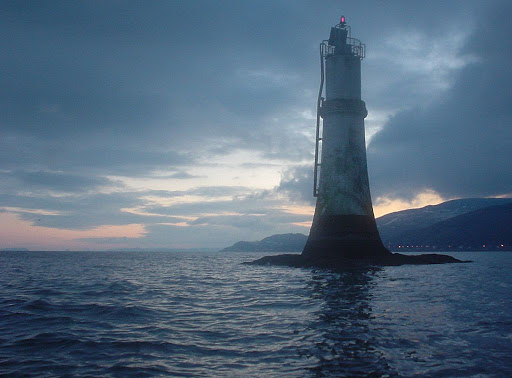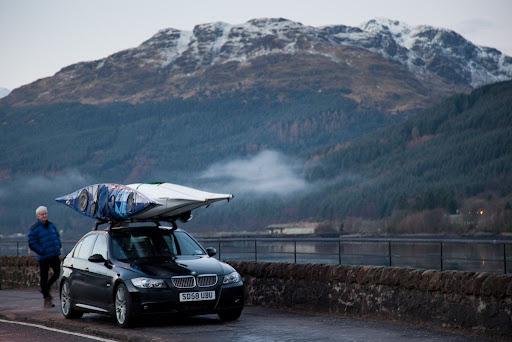
On Saturday 23rd January, a high pressure area sat across Scotland. As we drove north towards Oban, the forecast was for coastal fog. We took a detour over to
Arrochar at the head of Loch Long and since there was no fog we decided to press on.
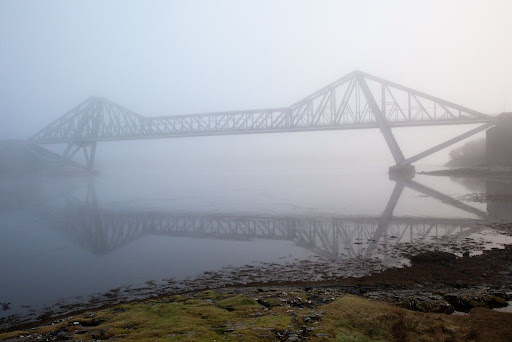
At
Connel bridge over the tidal narrows of Loch Etive, the fog was firmly down. The Falls of Lora were not in evidence because it was the last hour of the flood.
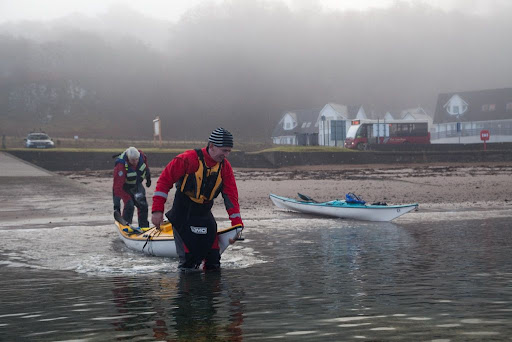
At
Ganavan Sands, to the NE of Oban, the fog rolled in just as we were launching. We could hear the booming of the
MV Isle of Mull's foghorn as she made her unseen approach to Oban from Craignure on Mull. Our plan to nip across to Mull for the day would need to wait!
Ganavan is a very convenient launch site near Oban. Car parking is free in the winter but there are often pay and display meters. There is a public convenience with water at the back of the car park. The very wide slip way betrays Ganavan's past. In WW2 it was the maintenance base for No. 209 Squadron RAF. The squadron moved to Oban in 1939 and flew antisubmarine missions over the North Atlantic shipping lanes. From 1940 they used troublesome Saunders Roe Lerwick aircraft but changed to PYB Catalinas in 1941.
There would have been no danger of a flying boat landing on us today. They would be grounded. Actually, although the Catalinas are long gone, Oban does have a
current seaplane service to and from Glasgow.

